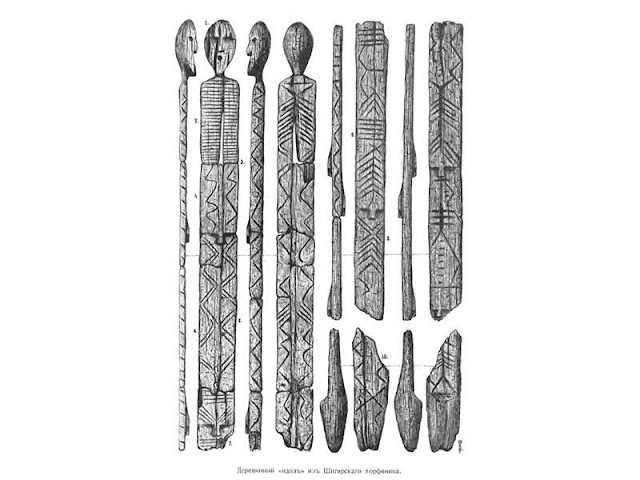This is amazing!
This Wooden Sculpture Is Twice as Old as Stonehenge and the Pyramids
New findings about the 12,100-year-old Shigir Idol have major implications for the study of prehistoryGold prospectors first discovered the so-called Shigir Idol at the bottom of a peat bog in Russia’s Ural mountain range in 1894. The unique object—a nine-foot-tall totem pole composed of ten wooden fragments carved with expressive faces, eyes and limbs and decorated with geometric patterns—represents the oldest known surviving work of wooden ritual art in the world.
More than a century after its discovery, archaeologists continue to uncover surprises about this astonishing artifact. As Thomas Terberger, a scholar of prehistory at Göttingen University in Germany, and his colleagues wrote in the journal Quaternary International in January, new research suggests the sculpture is 900 years older than previously thought.
Based on extensive analysis, Terberger’s team now estimates that the wood used to make the Shigir statue is about 12,250 years old. Carved from a single larch tree with 159 growth rings, the object itself was likely crafted around 12,100 years ago, at the end of the Last Ice Age, reports Michelle Starr for Science Alert.
“The idol was carved during an era of great climate change, when early forests were spreading across a warmer late glacial to postglacial Eurasia,” Terberger tells Franz Lidz of the New York Times. “The landscape changed, and the art—figurative designs and naturalistic animals painted in caves and carved in rock—did, too, perhaps as a way to help people come to grips with the challenging environments they encountered.”
According to Sarah Cascone of Artnet News, the new findings indicate that the rare artwork predates Stonehenge, which was created around 5,000 years ago, by more than 7,000 years. It’s also twice as old as the Egyptian pyramids, which date to roughly 4,500 years ago.
As the Times reports, researchers have been puzzling over the age of the Shigir sculpture for decades. The debate has major implications for the study of prehistory, which tends to emphasize a Western-centric view of human development. [...]
“Wood working was probably widespread during the Late Glacial to early Holocene,” the authors wrote in the 2018 article. “We see the Shigir sculpture as a document of a complex symbolic behavior and of the spiritual world of the Late Glacial to Early Mesolithic hunter-gatherers of the Urals.”
The fact that this rare evidence of hunter-gatherer artwork endured until modern times is a marvel in and of itself, notes Science Alert. The acidic, antimicrobial environment of the Russian peat bog preserved the wooden structure for millennia.
João Zilhão, a scholar at the University of Barcelona who was not involved in the study, tells the Times that the artifact’s remarkable survival reminds scientists of an important truth: that a lack of evidence of ancient art doesn’t mean it never existed. Rather, many ancient people created art objects out of perishable materials that could not withstand the test of time and were therefore left out of the archaeological record.
“It’s similar to the ‘Neanderthals did not make art’ fable, which was entirely based on absence of evidence,” Zilhão says. “Likewise, the overwhelming scientific consensus used to hold that modern humans were superior in key ways, including their ability to innovate, communicate and adapt to different environments. Nonsense, all of it.”
via {the Smithsonian}



0 comments:
Post a Comment